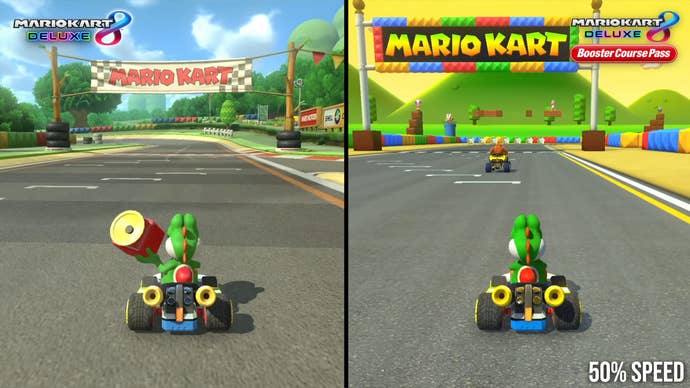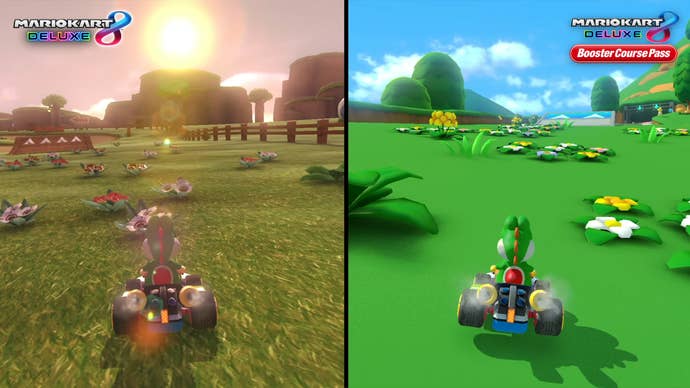An in-depth look at how Nintendo ‘remastered’ its old circuits for Switch.
These feature plenty of texture detail and elaborate buildings, backdrops and interiors.
To start with, the textures look completely different.

The Booster Course tracks have flat, low-detail textures in general, particularly on trackside geometry and foliage.
The new tracks have a clay-like appearance as a result, with minimal surface detail in most areas.
Some of those simpler textures also appear to exhibit some compression artifacts.

Model geometry is also handled very differently between the two groups of tracks.
The Booster Courses look much simpler.
Trackside buildings, for instance, look flat, boxy, and visibly low-poly.

There are a handful of other modeling differences worth mentioning as well.
In the Booster Courses, these have been swapped with simple plastic-like models, without any alpha textures.
Mario Kart 8 takes some rendering shortcuts to improve performance - like baking out shadowmaps across environments.

One of the largest performance gains, however, likely comes from baked ambient occlusion.
More annoying is the implementation of cubemaps for reflections.
The Booster Courses use cubemaps in a much less tactful way.

My final complaint here comes down to track design.
The track layouts are simpler, with fewer corners, wider roads, and shorter circuit lengths.
For most textures, however, the differences are more subtle.

These new tracks seem to have been fully redone rather than being simple ports.
That’s probably for the best, given the limited polygon budget of prior Mario Kart titles.

